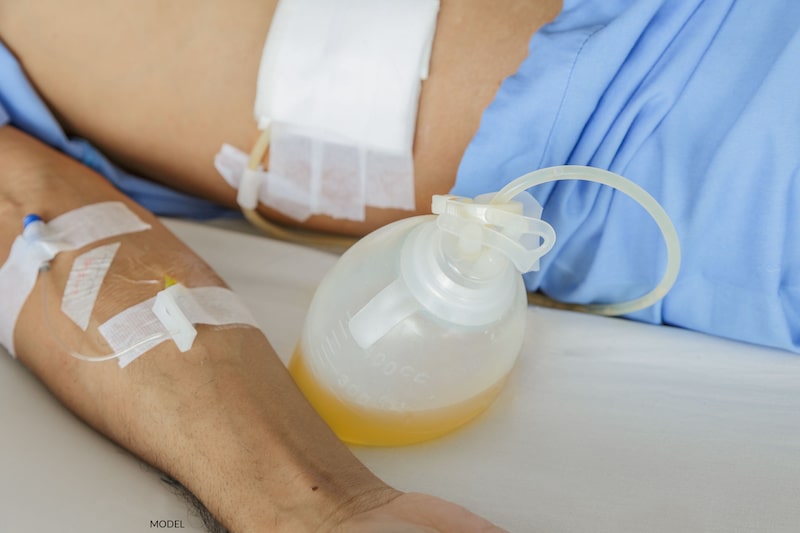4 Minute Read:
Picture this. You’re sitting with the doctor at your consultation appointment, feeling completely at ease and excited to move forward with your cosmetic procedure. Everything is lining up perfectly and nothing can get in the way of your excitement. As the doctor starts to discuss the recovery process, he utters those four seemingly stress-free words – “You will have surgical drains.” Eyes go wide, rapid breathing commences and panic sets in. *Cue the dramatic music*
Okay, so, this may not have been your exact reaction, but most of us tend to go through the following thought process: Ugh, I’m going to need drains. Will they hurt? How long will I have them? Can they be hidden? And then, finally ending with, “Do I really even NEED drains???”

It’s normal to feel overwhelmed and nervous about the idea of drains and what to expect. Sometimes we’re so apprehensive that we even consider putting off our cosmetic surgery that we’ve waited so long for! But do these little guys get a bad rap? Could they possibly be the most important thing for successful recoveries?
Let’s dive in…
What is a JP Drain?
So, what exactly is a surgical drain and what does it look like? A Jackson-Pratt drain is an air-sealed drainage system that is used to prevent the collection of fluid after a surgical procedure. The drain consists of soft tubing positioned beneath your skin and a round collection bulb attachment. The drain tube is sutured (stitched) in place at the insertion site and secured with a clear piece of tape, while the bulb is pinned to your compression garment.
DO DRAINS HURT?
No! Your drains are put in during surgery so you will not feel them at all. You may have some tenderness at the incision site but that is completely normal. If your drain gets pulled on by a child or gets snagged on something while moving around, it may cause some initial pain and tenderness, but overall, the pain with having drains is very minimal.
WHY DO I NEED SURGICAL DRAINS?
This is the most important question and information you need to know! During a procedure, there may be several layers of tissue that are disrupted and the body’s natural response to this disruption is to create fluid between the tissue layers. Having drains in place helps promote healing by allowing these tissue layers to re-adhere, while minimizing the chance of infection and seromas (fluid pockets).
With having drains, your recovery will typically be quicker and with less complications. Some procedures that require surgical drains include abdominoplasty (tummy tuck), breast implant removal, breast reduction, and thigh lift. Each patient is unique and your surgeon will determine the needs for drains at the consultation.
WHEN WILL I GET MY DRAINS OUT?
The fluid that builds up from plastic surgery HAS to go somewhere, and the goal is to remove it from your body to avoid seromas and infection. Expect your drains to be in place for 10-14 days depending on your drainage output.
We will provide you with drain collection instructions and have you email your totals to our nursing team each morning. The removal of your drains depends on how your drain totals are trending each day.
HOW DO I HIDE MY SURGICAL DRAINS?
Drains can be hidden by wearing loose clothing — think long cardigans, oversized sweatshirts, vests, sweatpants and pajamas. There are numerous retailers that sell shirts, sweaters and belts that have drain holders, making it even easier to conceal and support your drains!
Many things can pull on your drains such as children, pets and door handles to name a few. Because of this, we ask you to be vigilant in being careful and taking your time to perform your daily activities. We encourage you to lay low until your drains are removed. It’s also important to keep your drains covered with clothing to further prevent any pulling.
DRAINS ARE CREATED WITH THE PATIENT IN MIND – WE PROMISE!
Although surgical drains can be cumbersome (and definitely not sexy!) they are not worth the fear and anxiety that many of us produce in our minds. Really, surgical drains are crucial in the recovery process and they are recommended for certain procedures to ensure you have a safe and speedy recovery. Remember, too, that your drains are only temporary!
Before you know it, you’ll be enjoying the results of your improved body and newfound confidence.